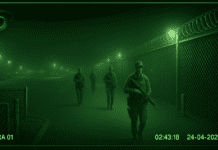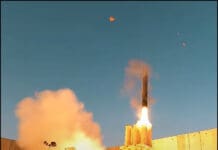This post is also available in:
 עברית (Hebrew)
עברית (Hebrew)
American supercomputers were installed in a secret Israeli military intelligence base; their mission: Encryption and decryption of secret messages.
Israel purchased more than ten supercomputers who are currently operating in the Technion, Hebrew Univeristy, Weizman Institute and Ben Gurion University. Their combined capabilities may help Israel overcome an important engineering challenge: the production of warheads for long-range, intercontinental ballistic missiles.
By Ami Dor On
 Israel has been trying to purchase American supercomputers since 1988, in order to increase the processing power needed to develop nuclear weapons. Supercomputers with such advanced processing capabilities, like the ones Israel needed, are capable of simulating nuclear explosion blast waves; calculating the movement speed of neutrons as nuclear chain reactions occurs; and assessing the physical behavior of nuclear explosions, either plutonium based or enriched uranium based, and in conditions of extremly high temperatures.
Israel has been trying to purchase American supercomputers since 1988, in order to increase the processing power needed to develop nuclear weapons. Supercomputers with such advanced processing capabilities, like the ones Israel needed, are capable of simulating nuclear explosion blast waves; calculating the movement speed of neutrons as nuclear chain reactions occurs; and assessing the physical behavior of nuclear explosions, either plutonium based or enriched uranium based, and in conditions of extremly high temperatures.
A relatively simple nuclear bomb can be produced using less sophisticated computers. Israel, however, wants supercomputers in order to avoid the need to conduct nuclear tests. Supercomputers can also be highly useful for designing ballistic missilies, and assess their ability to withstand temperatures and pressures experienced during reentry into the atmosphere.
Since the 1980s the U.S. And other countries refused to sell Israel supercomputers, since Israel did not join the nuclear non-proliferation treaty. Diplomatic efforts and the changing political circumstances slowly eroded this refusal, until in 1992 the Technion finally purchased two powerful computers from Meiko Scientific. When combined, the two could achive the processing power of a supercomputer.
After this initial hurdle was overcome, eventually the U.S. realized that Israel would not stop advancing its plans. In 1994 the U.S. sold Israel nine supercomputers, two from Cray Research and two more from Silicon Graphics. The computers were divided among Israel’s research centers, the Technion, Hebrew University and Weizmann Institute, all connected to Israel’s missile and nuclear programs. The combined processing power of these computers reaches 1,071 to 6,796 million calculations per second.
The American government’s decision to sell these supercomputers to Israel was blasted by the American nuclear energy board and the Department of Defense, as these computers combined could help Israel solve a critical engineering problem: How to miniaturize thermo-nuclear warheads able to withstand long-range, intercontinental ballistic missile launches.
In 1996 the United States authorized the sale of another supercomputer to the Israeli Ministry of Defense, for use in a “secret military base.” The computer, also produced by Cray Research, can perform 2,625 million calculations per second, and according to American sources was going to be used by the Israeli intelligence services to encrypt or decrypt secret messages.
 In May 1996 the U.S. approved a request by the Israeli Ministry of Defense to upgrade the processing power of one of the computers, from 1,335 million calculations per second to 2,596 million calculations per second. This upgrade was approved by top level government officials, while experts objected. The same approval also included the upgrade of the Tel Aviv University supercomputer’s processor, from 5,225 million calculations per second to 10,425 million calculations per second. Approval was also given to transfer the supercomputer center from Tel Aviv University to Ben Gurion University.
In May 1996 the U.S. approved a request by the Israeli Ministry of Defense to upgrade the processing power of one of the computers, from 1,335 million calculations per second to 2,596 million calculations per second. This upgrade was approved by top level government officials, while experts objected. The same approval also included the upgrade of the Tel Aviv University supercomputer’s processor, from 5,225 million calculations per second to 10,425 million calculations per second. Approval was also given to transfer the supercomputer center from Tel Aviv University to Ben Gurion University.
The information in this article was published in the Wisconsin Project on Nuclear Arms Control website, which supports nuclear non-proliferation. The website was established in 1986 by Professor Gary Milholin, in cooperation with the University of Wisconsin. It operated a program called Risk Report, following the activities of companies suspected of being connected to WMD manufacturers and terrorist organizations.


























